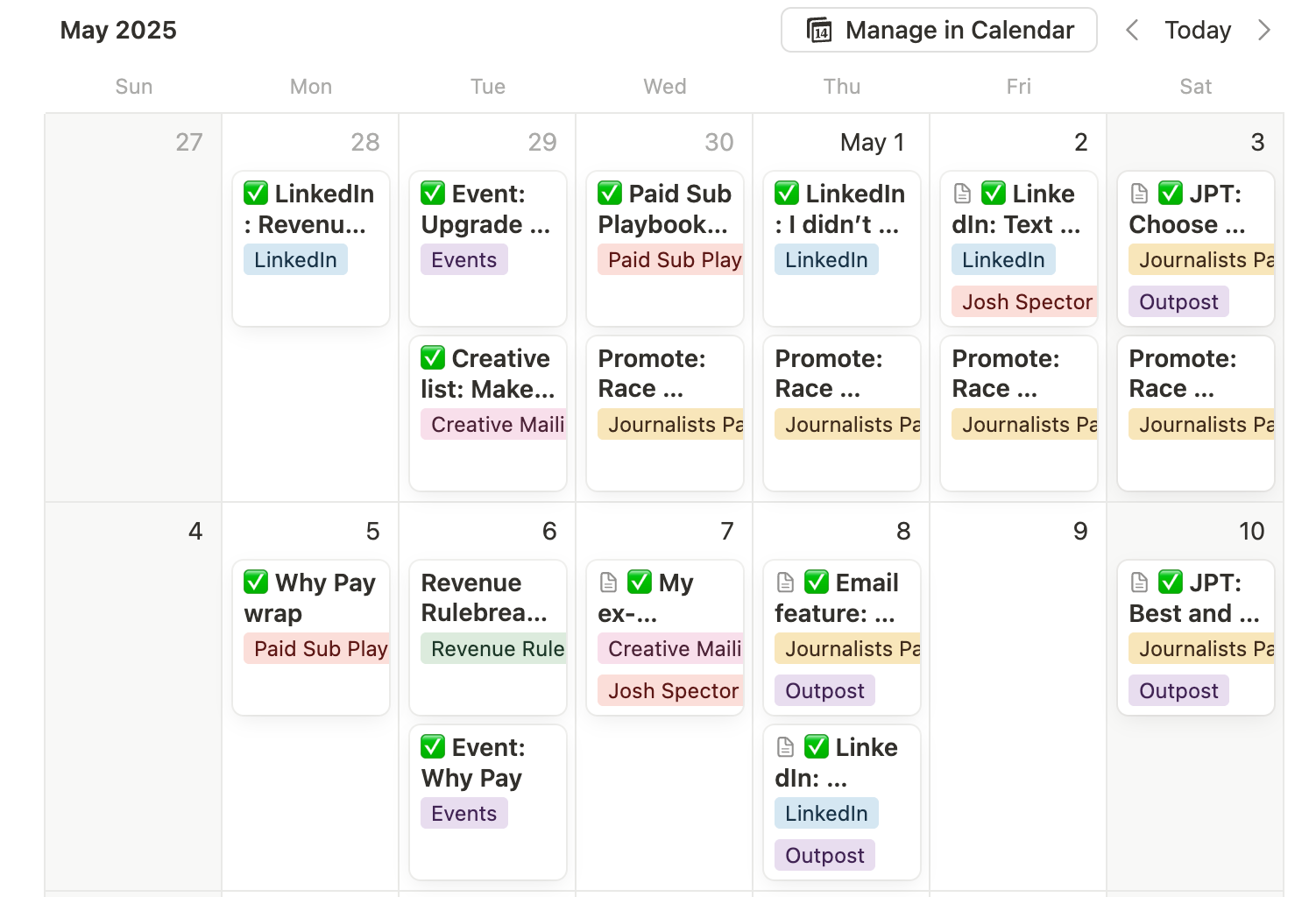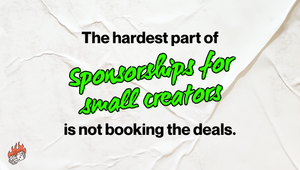Brought to you by the fine folks at Outpost for Ghost publishers. Get more subscription revenue for your Ghost publication with Outpost 🪐

I am running paid partnerships differently this year.
After years of working with brands in ad hoc ways, I realized that I was lending so much of my reputation and credibility to them that went unaccounted for in partnership agreements. So I wanted to go bigger with partnerships this year: working with a small set of partners for longer periods of time.
I wrote about how I pitched and framed my partnerships back in January and what changed from ad placement thinking to really treating partners as a value add to my business and my audience.
Now that we're six months into this new model, I wanted to share some of what's working great about these partnerships and some of what I still need to crack.
Everyone always thinks the hardest part is booking the deals. It's not. It's getting results for partners. Booking deals is easy, but if you can't get results OR if those results are too labor intensive, it becomes hard to sustain partnerships.
What has surprised me
People who invest in me, invest in my partners
The most surprising thing—by far—is that the majority of the people taking my sponsors up on their offers are already my paid subscribers.
Very few of my free readers buy from sponsors (or do so in a way that's trackable for me). On one hand, this is great because it means I am choosing well aligned partners that my most engaged subscribers find useful. On the other, I often think about only putting sponsors on free content. It would be very tough to pull that off right now. My free audience is basically a vanity metric.
I was wrong about how many partners I could manage
When doing this year's revenue projections, I scoped out having 1 featured partner and 2 smaller partners at all times this year. Once I started running my partnerships with Outpost and Josh Spector in January though, I realized it was too hard to produce the amount of content I needed to produce to support a third sponsor.

Running partnerships requires not only delivering on your sponsored content but also delivering a ton of free content that keeps your audience interested in keeping up with you at all. Along with all the paywalled content I produce and subscriber-specific communications, it was not going to be possible to have three. I just can't produce that volume of stuff. Two partners at a time is the max for me right now.
I prefer outbound pitching to inbound leads
Justin Moore, sponsorship whiz to the stars, kindly offered me some feedback that I should have a partnerships page on my website. The reason I don't is that most of my inbound partnership requests have been bad. The partners I have loved working with were all ones I pitched.
For example, beehiiv sent me an inbound request to do a sponsored LinkedIn video for them. They wanted to pay me $350 for the post and I knew it was just part of a campaign with multiple creators. I can't compete in that arena. I'm not a volume player. And I will always be underpaid if I am just one of many creators being booked by a brand because my audience size and raw engagement rate is SMALL. I need to work with brands who care about sales and who understand the value of my audience (which is filled with influential people) in particular.
When I pitch partners myself, I stand alone. I can identify a brand my audience will respond to. I can set the expectations for the campaign. And I can package it how I want to. For my three partnerships so far this year, I've been able to run them on my terms and that's the direction I'm continuing in.
What's not working
Come along for the ride!
Revenue Rulebreaker is a member-supported publication. You wouldn't think a shitty writer like me could do that but turns out I can. Get in on this fun parade when you become a Legend.
Legends get:
- All access to everything I post
- Special invites and events
- Recognition on The List of Legends
 Become a member
Become a member




